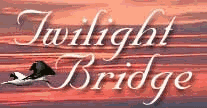- Characteristic
symptoms: Two (or more) of the following,
each present for a significant portion of time during a 1-month
period (or less if successfully treated):
- delusions
- hallucinations
- disorganized speech (e.g., frequent derailment or incoherence)
- grossly disorganized or catatonic behavior
- negative symptoms, i.e., affective flattening, alogia, or
avolition
Note: Only one Criterion A symptom is required if
delusions are bizarre or hallucinations consist of a voice keeping
up a running commentary on the person's behavior or thoughts, or two
or more voices conversing with each other.
- Social/occupational dysfunction: For a significant portion
of the time since the onset of the disturbance, one or more major
areas of functioning such as work, interpersonal relations, or
self-care are markedly below the level achieved prior to the onset
(or when the onset is in childhood or adolescence, failure to
achieve expected level of interpersonal, academic, or occupational
achievement).
- Duration: Continuous signs of the disturbance persist for
at least 6 months. This 6-month period must include at least 1 month
of symptoms (or less if successfully treated) that meet Criterion A
(i.e., active-phase symptoms) and may include periods of prodromal
or residual symptoms. During these prodromal or residual periods,
the signs of the disturbance may be manifested by only negative
symptoms or two or more symptoms listed in Criterion A present in an
attenuated form (e.g., odd beliefs, unusual perceptual experiences).
- Schizoaffective and Mood Disorder exclusion:
Schizoaffective Disorder and Mood Disorder With Psychotic Features
have been ruled out because either (1) no Major Depressive, Manic,
or Mixed Episodes have occurred concurrently with the active-phase
symptoms; or (2) if mood episodes have occurred during active-phase
symptoms, their total duration has been brief relative to the
duration of the active and residual periods.
- Substance/general medical condition exclusion: The
disturbance is not due to the direct physiological effects of a
substance (e.g., a drug of abuse, a medication) or a general medical
condition.
- Relationship to a Pervasive Developmental Disorder: If
there is a history of Autistic Disorder or another Pervasive
Developmental Disorder, the additional diagnosis of Schizophrenia is
made only if prominent delusions or hallucinations are also present
for at least a month (or less if successfully treated).
Diagnostic Criteria of Schizophrenia Subtypes
Paranoid Type
A type of Schizophrenia in which the following criteria are met:
- Preoccupation with one or more delusions or frequent auditory
hallucinations.
- None of the following is prominent: disorganized speech,
disorganized or catatonic behavior, or flat or inappropriate affect.
Catatonic Type
A type of Schizophrenia in which the clinical picture is dominated by
at least two of the following:
- motoric immobility as evidenced by catalepsy (including waxy
flexibility) or stupor
- excessive motor activity (that is apparently purposeless and not
influenced by external stimuli)
- extreme negativism (an apparently motiveless resistance to all
instructions or maintenance of a rigid posture against attempts to
be moved) or mutism
- peculiarities of voluntary movement as evidenced by posturing
(voluntary assumption of inappropriate or bizarre postures),
stereotyped movements, prominent mannerisms, or prominent grimacing
- echolalia or echopraxia
Disorganized Type
A type of Schizophrenia in which the following criteria are met:
- All of the following are prominent:
- disorganized speech
- disorganized behavior
- flat or inappropriate affect
- The criteria are not met for Catatonic Type.
Undifferentiated Type
A type of Schizophrenia in which symptoms that meet Criterion A are
present, but the criteria are not met for the Paranoid, Disorganized, or
Catatonic Type.
Residual Type
A type of Schizophrenia in which the following criteria are met:
- Absence of prominent delusions, hallucinations, disorganized
speech, and grossly disorganized or catatonic behavior.
- There is continuing evidence of the disturbance, as indicated by
the presence of negative symptoms or two or more symptoms listed in
Criterion A for Schizophrenia, present in an attenuated form (e.g.,
odd beliefs, unusual perceptual experiences).
Associated Features
- Learning Problem
- Hypoactivity
- Psychotic
- Euphoric Mood
- Depressed Mood
- Somatic/Sexual Dysfunction
- Hyperactivity
- Guilt/Obsession
- Sexually Deviant Behavior
- Odd/Eccentric/Suspicious Personality
- Anxious/Fearful/Dependent Personality
- Dramatic/Erratic/Antisocial Personality
Differential Diagnosis
Psychotic Disorder Due to a General Medical Condition, delirium, or
dementia; Substance-Induced Psychotic Disorder; Substance-Induced
Delirium; Substance-Induced Persisting Dementia; Substance-Related
Disorders; Mood Disorder With Psychotic Features; Schizoaffective
Disorder; Depressive Disorder Not Otherwise Specified; Bipolar Disorder
Not Otherwise Specified; Mood Disorder With Catatonic Features;
Schizophreniform Disorder; Brief Psychotic Disorder; Delusional
Disorder; Psychotic Disorder Not Otherwise Specified; Pervasive
Developmental Disorders (e.g., Autistic Disorder); childhood
presentations combining disorganized speech (from a Communication
Disorder) and disorganized behavior (from Attention-Deficit/
Hyperactivity Disorder); Schizotypal Disorder; Schizoid Disorder;
Paranoid Personality Disorder.
____________________________________________________________________________













